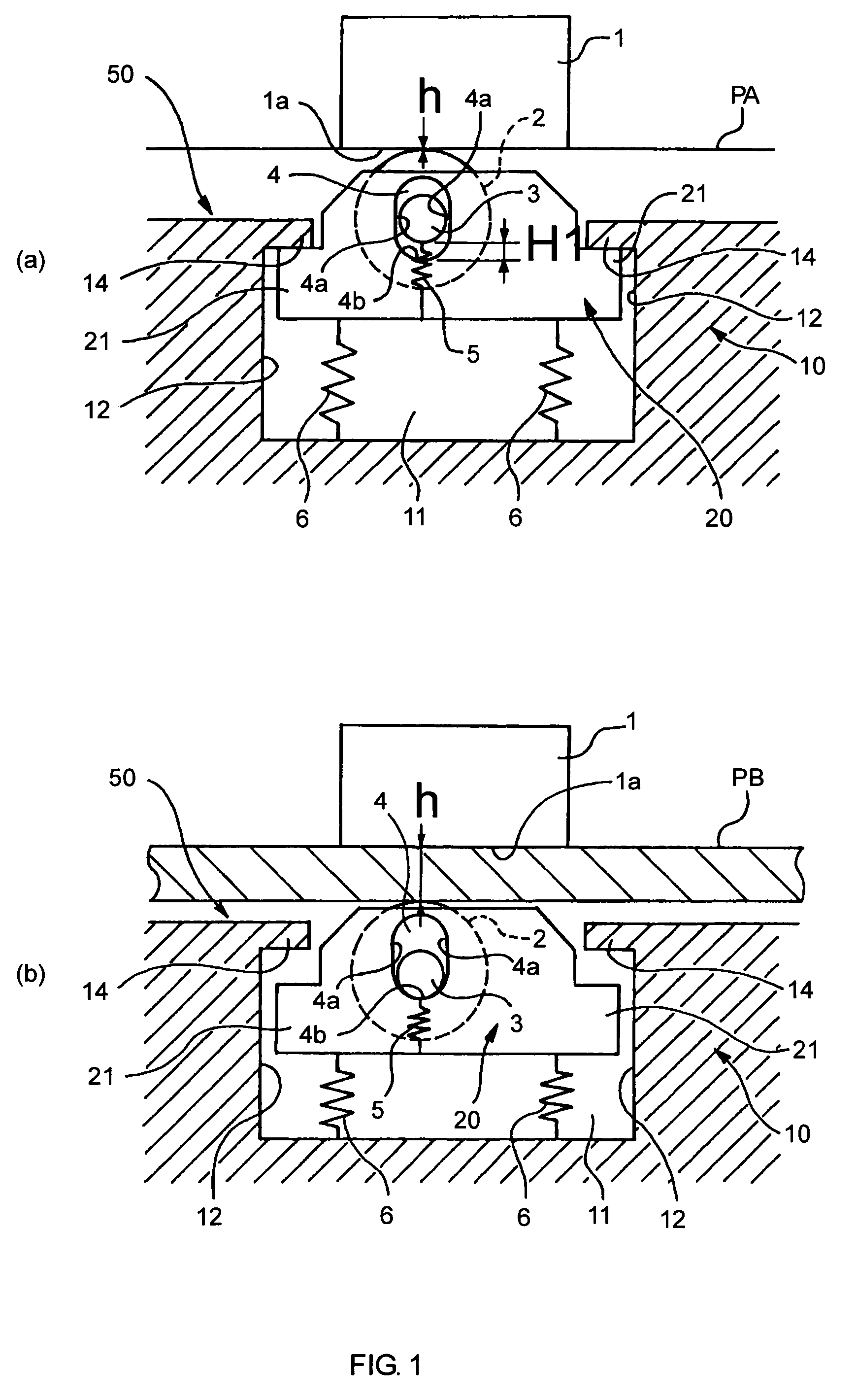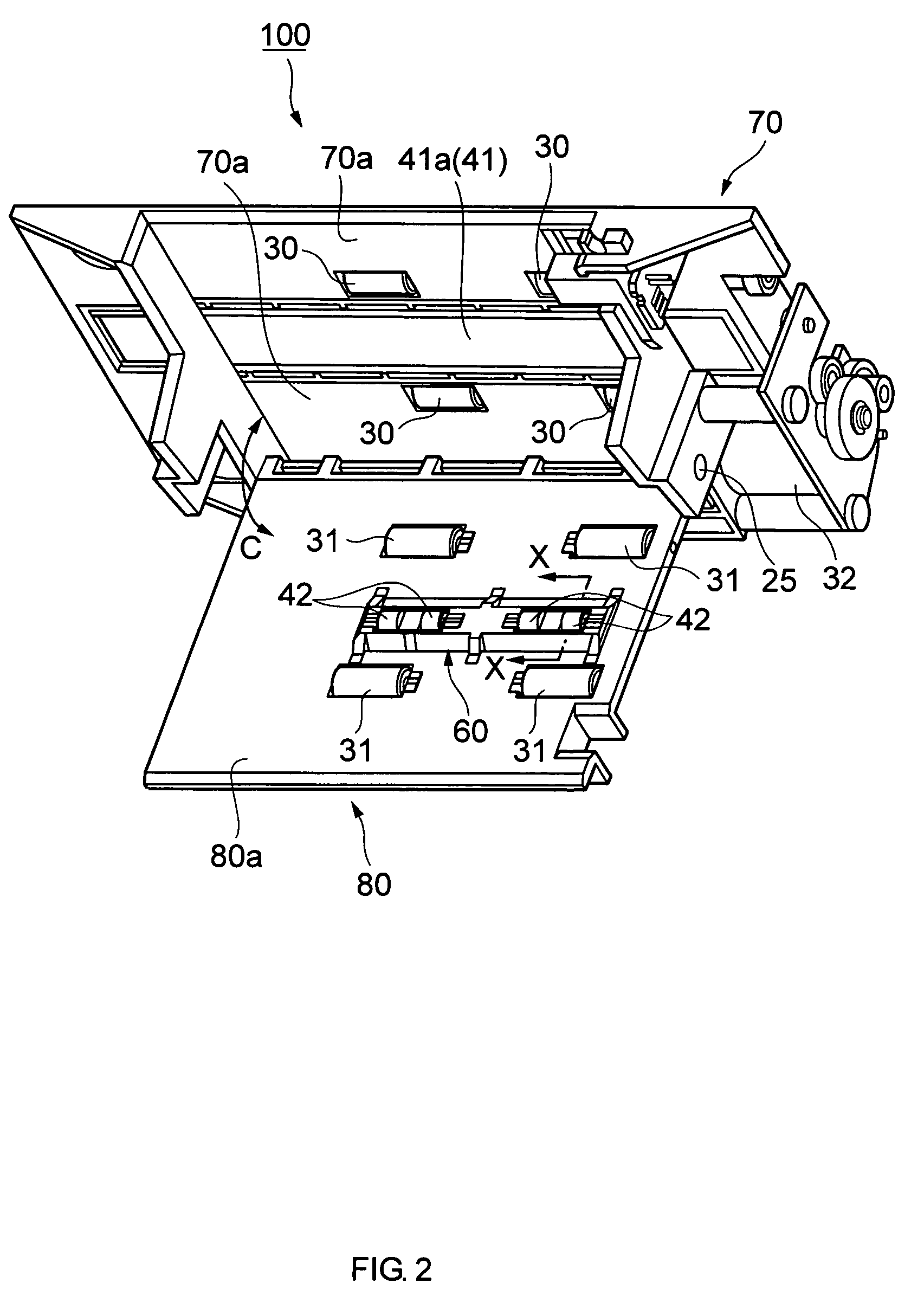Image scanning apparatus, method and business machine using the same
a scanning apparatus and image technology, applied in the direction of electrographic process, printing, instruments, etc., can solve the problems of affecting the quality of the document, the tendency of the document to bend, and the insufficient pressure on the thick original to press against the platen,
- Summary
- Abstract
- Description
- Claims
- Application Information
AI Technical Summary
Benefits of technology
Problems solved by technology
Method used
Image
Examples
first embodiment
[0055]FIG. 2 to FIG. 5 illustrate a more specific application of the above-described pressure-generating mechanism 50. FIG. 2 is a perspective view of the first embodiment of a scanner and FIG. 3 is a partial perspective view of the main parts of this scanner. FIG. 4 and FIG. 5 are sectional views of the scanner through line X-X in FIG. 2. FIG. 4 is a sectional view when a thin original is inserted, and FIG. 5 is a sectional view when scanning a thick original.
[0056]The scanner 100 shown in FIG. 2 is mounted to a main frame 70 comprising a drive system by means of a hinge 25 enabling a paper guide cover 80 (corresponding to the fixed guide 10 in FIG. 1) to freely open and close in the direction indicated by arrow C in FIG. 2.
[0057]Mounted to the main frame 70 is a motor 32, four paper feed drive rollers 30 that are linked to and driven by the motor 32, and a contact image sensor 41.
[0058]The contact image sensor 41 is disposed between the drive rollers 30. As shown in FIG. 4, the sc...
second embodiment
[0098]Another embodiment of a scanner according to the present invention is described hereafter with reference to FIG. 7 to FIG. 14.
[0099]FIG. 7 is a perspective view showing a business machine 200 equipped with a scanner 110 of FIG. 8 according to a second embodiment of the present invention.
[0100]This business machine 200 is a multiple function printer equipped with a scanner, and can print on both roll paper, not shown, and slip paper, not shown, and can, furthermore, scan and capture information from both slip forms and cards.
[0101]This business machine 200 has an integrally formed bottom housing part 211, a front housing part 212, and a top cover unit 213. The bottom housing part 211 holds a roll of paper, not shown, and has a printing mechanism for printing on roll paper drawn off this roll. The front housing part 212 is disposed at the front of bottom housing part 211 and has a slip paper feed path 221 for transporting slips between the front housing part 212 and bottom housi...
PUM
 Login to View More
Login to View More Abstract
Description
Claims
Application Information
 Login to View More
Login to View More - R&D
- Intellectual Property
- Life Sciences
- Materials
- Tech Scout
- Unparalleled Data Quality
- Higher Quality Content
- 60% Fewer Hallucinations
Browse by: Latest US Patents, China's latest patents, Technical Efficacy Thesaurus, Application Domain, Technology Topic, Popular Technical Reports.
© 2025 PatSnap. All rights reserved.Legal|Privacy policy|Modern Slavery Act Transparency Statement|Sitemap|About US| Contact US: help@patsnap.com



